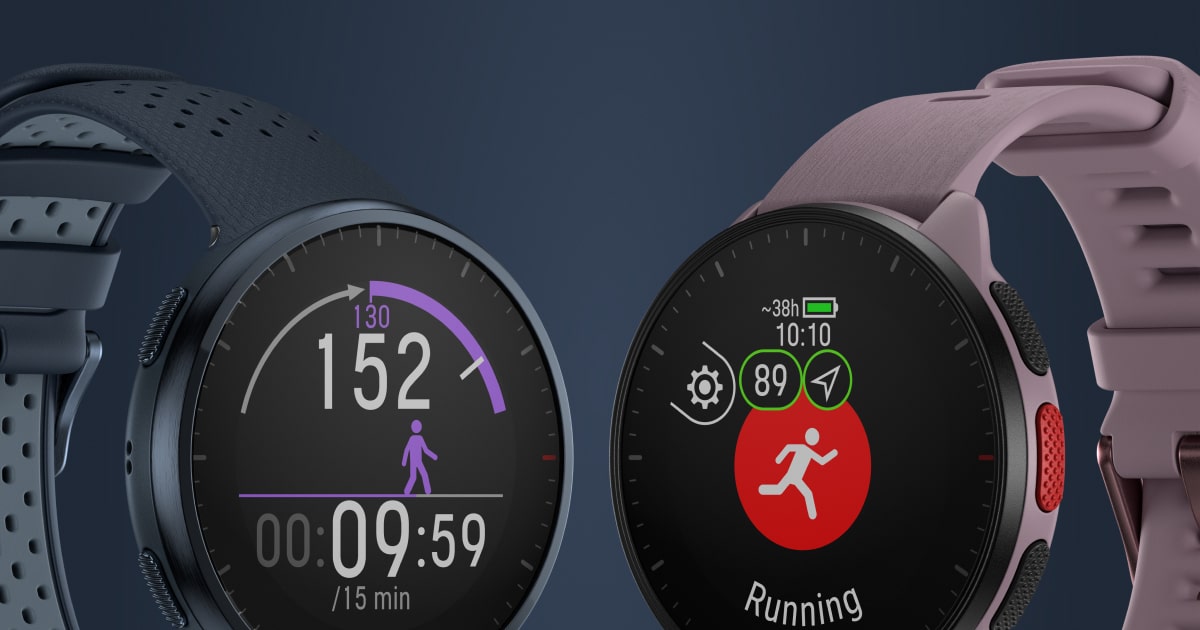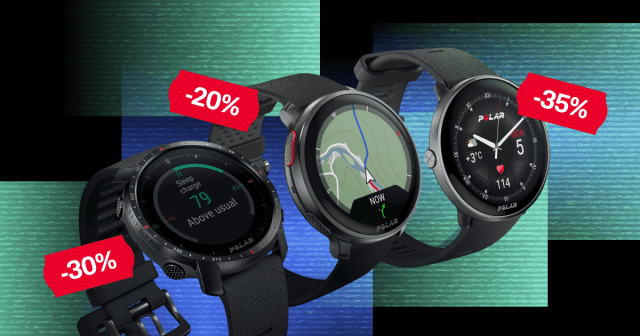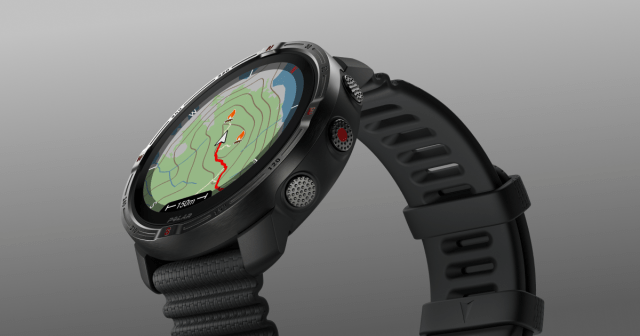It’s not about how fast you run or how long you go. Variety and consistency are the keys to your growth as a runner. Any running plan worth its salt includes different types of runs: some will be long and slow; some, short and fast; and some will involve different intervals and speedwork. For any type of run, there are suitable training views that show on the screen of your watch the relevant metrics for that specific run.
Different training views is one of the greatest advantages of using a running watch. At all times you can focus on just the metrics that matter. For example, if you’re going for a progressive run, you want to make sure your current pace is faster than it was during the previous section of the run.
With many of our sports watches (including the new Polar Pacer and Polar Pacer Pro), you can customize your training views and choose what metrics are shown on screen during your workout.
To help you decide and give you some inspiration we put together a list of five different training views for our latest running watches, Polar Pacer and Polar Pacer Pro – for five different running workouts. To customize your training views, go to Polar Flow > Sport profiles > Edit a sport profile > Related to device > Training views. You can also do it on the Polar Flow app (point 3 in the list).
Okay, do you have Polar Flow all ready to go? Let’s do this. Note that the pictures show Polar Pacer Pro but these same training views work for Polar Pacer as well.
The Fundamentals Training View
1. Distance 2. Pace 3. Duration 4. Heart rate
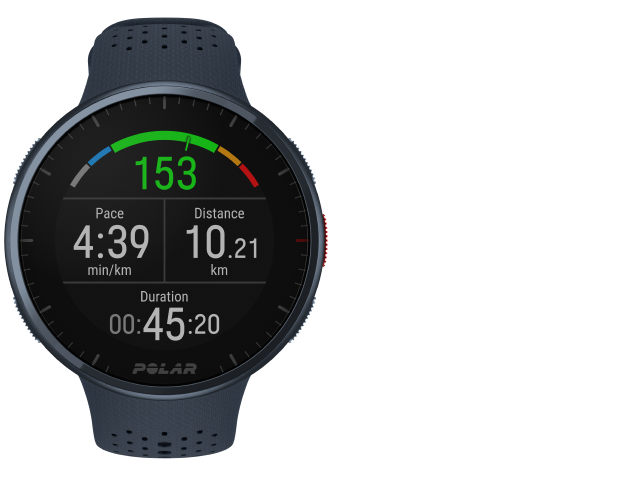
What makes this training view so fundamental?
If you only use one training view, use this. This is the workhorse of training views: reliable, versatile and robust.
There are two main ways to determine the goal of a running workout: distance or duration. You could, for example, decide to do a 10K run or a 60-minute run. That’s why we’ve included both distance and duration.
You also have to decide the intensity of your running workout, usually by determining the pace or the target heart rate.
Combine these four values into one training view and you’re good to go.
Interval Training View
1. Lap distance 2. Pace 3. Lap time 4. Heart rate
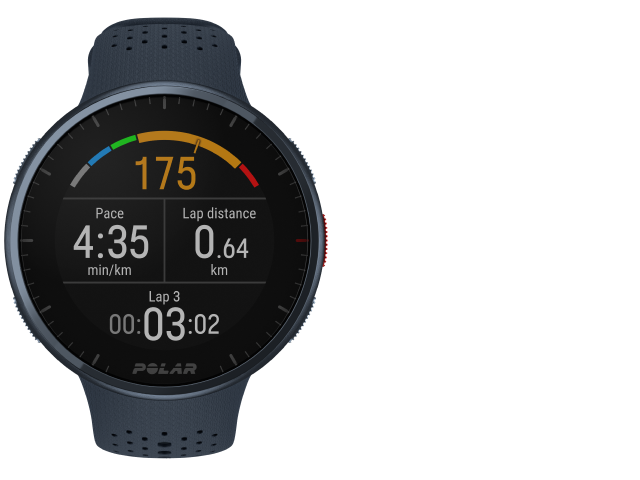
Another versatile training view
This view is similar to the Fundamentals Training View but instead of overall distance and duration, we’re more interested in lap distance and lap time. An interval training workout is composed of sections you run at different intensities. When you start a new section, you should also start a new lap.
You can also use this as your go-to training view even if you’re not doing interval training. Just don’t start a new lap during your run and lap distance and lap time will indicate your overall distance and time.
What should you keep an eye on during an interval workout?
Use lap distance or lap time to determine when the next section starts. Keep an eye on your pace and heart rate to gauge the workout intensity.
Progressive Run Training View
1. Distance 2. Last automatic lap time 3. Automatic lap speed/pace avg 4. Heart rate
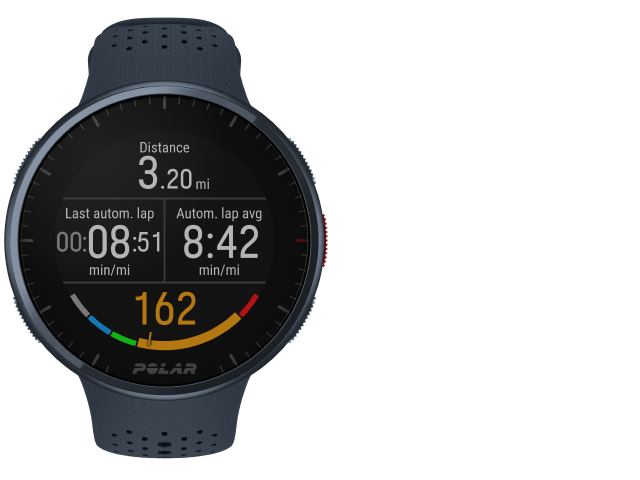
What is a progressive run?
A progressive run is one in which you up the intensity of your workout throughout your run. At the start of your workout, you’re feeling fresh, excited and full of energy. You might feel tempted to start fast and slow down later.
Resist that temptation and enjoy the training benefits of progressive runs.
If your running route is such that it doesn’t affect your pace, you should run every mile faster than the one before. If that’s not possible, at least make sure you’re not slowing down. This way the training effect of your workout will remain positive.
What should you keep an eye on during a progressive run?
A suitable training view should help you control your pace. With distance you’ll know how long you’ve got ahead of you and your heart rate will tell you how much harder you can go. If you set up automatic laps for every mile/kilometer on Polar Flow, last automatic lap time will effectively tell you your pace (as in how many minutes it took you to run the last mile/kilometer).
Similarly automatic lap speed/pace avg will give you your current pace. By comparing the last automatic lap time and the automatic lap speed/pace avg you can make sure that your pace is progressive.
Automatic laps on Polar Pacer and Polar Pacer Pro
You can set up automatic laps in Polar Flow > Settings > Sport profiles > Related to sport. For Polar Pacer and Polar Pacer Pro, you can set up automatic laps based on duration or distance. For example, you can define that Polar Pacer Pro starts a new lap every 1 kilometer or mile, or every 5 minutes.
Track Running Training View
1. Lap time 2. Heart rate
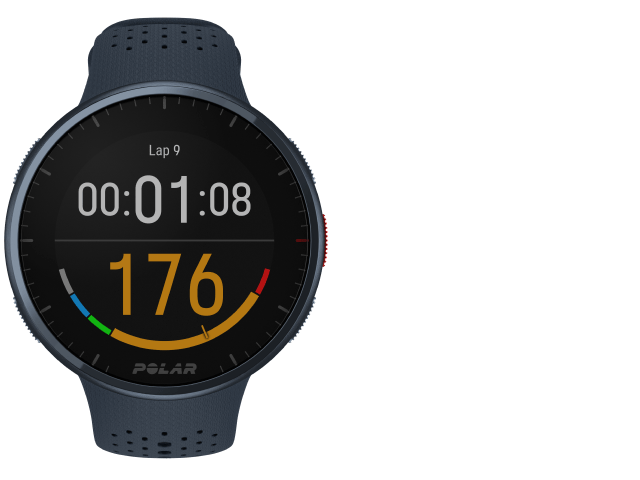
Going hard on the track
The hardest interval runs are often done on the track. The aim is to run a certain distance within a certain time. For example, you could aim to run half a lap in 45 seconds. You won’t need the GPS because you’ll be using the track markings to track your distance.
A common mistake that runners make is going full throttle in the first work phase, then having to slow down. Don’t run a section so hard that you can’t pick up your pace in the following section. Your last interval should be the fastest.
Also, each interval should have an upward curve. Speed up during the interval and don’t slow down. If you notice you can’t keep up your pace, you’ve started too hard.
Focus on what’s important
Interval training can be an extremely taxing exercise.You’ll get the best results if you focus on what you’re doing and nothing else. That’s why there are only two values on this training view: lap time and heart rate. When you’re recovering, having only these two values will keep your mind from wandering.
Fartlek Training View
1. Duration 2. Lap time 3. Pace zone 4. Heart rate
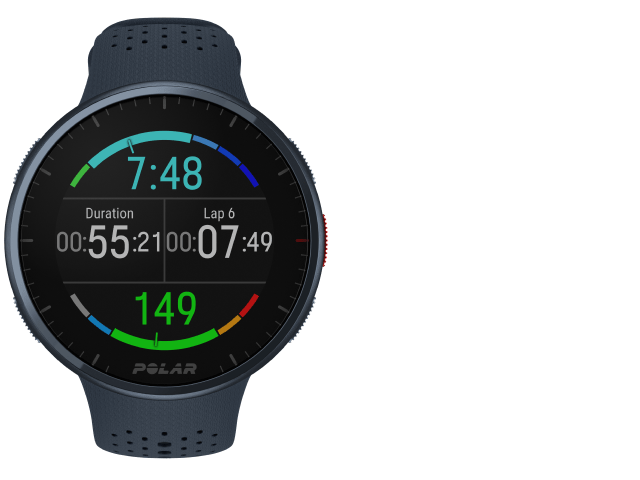
What is fartlek?
Fartlek is a Swedish invention (that’s why the name sounds like a minimalistic coffee table) and stands for speed play. The aim of fartlek is to break the monotony of a long run to sections of running hard and running easy.
Your fartlek session should include a warm-up phase, a work phase and a cool down phase. During the work phase you run either easy or hard. What makes it different from an interval training session is the duration of the work phases: during a fartlek session you decide how long you run. If you’re feeling good, run longer and harder. If not, keep the hard sections relatively short.
You can also try three levels of intensity instead of just two: easy, moderate and hard.
Fartlek training will enable you to run faster at a certain heart rate and handle lactate more efficiently. And it’s fun! Let’s not forget that.
What should you keep an eye on during speed play?
You should see the duration of your session. Often you aim for a certain overall duration and break that into shorter sections that you run at different intensities. For example, you can decide to do a 40-minute fartlek session.
You should start a new lap each time you change intensity. With lap time you can keep track of how long your work phases are.
Your heart rate doesn’t immediately reflect changes in how fast you’re running. A better indicator is your pace zone. Start running faster, make sure that you’ve moved up a pace zone, then move your focus to your heart rate to see what heart rate zone your training in. The easy sections should be done in zone 2, while the hard sections could go up to zone 4.
Sharing is caring, especially when it comes to the best training views. When you share this article, we’d love to hear what your favorite training views are and why.
If you liked this post, don’t forget to share so that others can find it, too.
Or give it a thumbs up!
I like this article
Please note that the information provided in the Polar Blog articles cannot replace individual advice from health professionals. Please consult your physician before starting a new fitness program.

